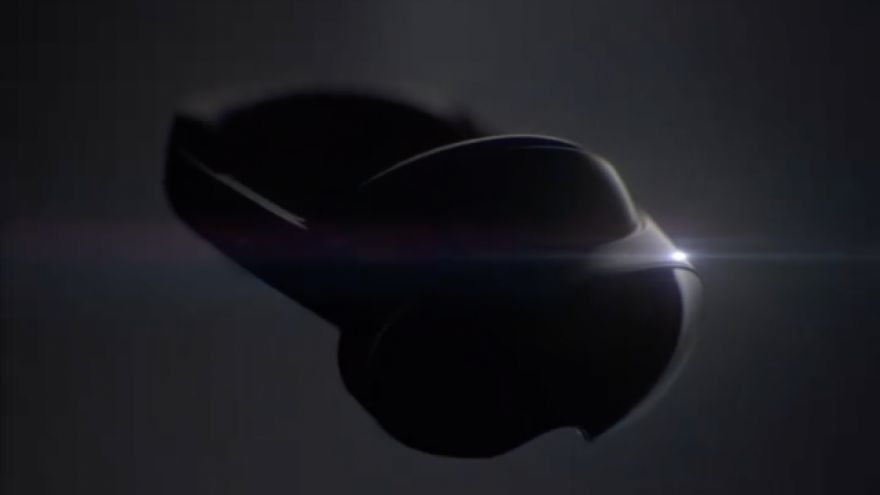
Researchers from the Event Horizon Telescope (EHT) have revealed the (abbreviated Sgr A*, pronounced “sadge-ay-star”), the supermassive black hole at the center of our galaxy. EHT project scientists made their dramatic reveal in multiple simultaneous press conferences around the world. The one in Munich was hosted by the European Southern Observatory (ESO), whose ALMA and APEX telescopes played crucial roles in the discovery. We sat down with the panelists and other EHT experts after the Munich conference, during a period set aside for Q&A. And we had a lot of questions! Here’s what we learned. ExtremeTech would like to thank the panelists and project scientists who answered our questions, including Sara Issaoun, Christian M.

(Photo: Unsplash)It’s human nature to attempt to grow plants outside of their native habitats. (The tropical monstera in my living room can attest to that.) So it’s no surprise that scientists have attempted to grow plants in soil from the Moon. Of course, they didn’t do it just to see if they could. The researchers—two horticulturists and a geologist from the University of Florida—tested the plants’ viability in lunar soil to hopefully benefit future Moon or Mars landings. Space-grown plants could potentially offer fresh produce, oxygen, and water recycling to astronauts conducting these missions. If really is in our future, space agriculture will need to step up its game.

Good morning, gentle reader, and welcome to your Friday roundup of the best stories and images from This Week in Space. This week, it’s all good news. The James Webb Space Telescope is fully aligned and sailing through its commissioning phase. And the JWST isn’t the only thing that’s aligned in a most auspicious way. Read on for specifics on how to observe a total lunar eclipse of the full moon on Sunday night — during an uncommon, and lovely, alignment of four planets. James Webb Space Telescope Takes Off the Training Wheels Since its launch in 2021, the James Webb Space Telescope (JWST) has knocked out every objective NASA set up for it.

The company formerly known as Facebook began teasing a new high-end Virtual Reality (VR) headset at the end of 2021. It’s dubbed Project Cambria and it’s been touted as a quasi “Quest Pro” type of device. So far details on the headset have been restricted to vague teaser shots and generalities about its capabilities. More info has now come to light though, courtesy of Mr. Zuckerberg himself. In a video posted to Facebook (where else?), he is shown using the headset for the first time. The video provides a brief glimpse into Cambria’s potential, but unfortunately the headset itself is blurred out.

(Photo: Tobias Tullius/Unsplash)If Immigration and Customs Enforcement (ICE) didn’t have a bad enough rap sheet already, it’s now worse: a law school out of Washington, DC has revealed the agency has been operating as a “domestic surveillance agency” for years. Georgetown Law’s Center on Privacy and Technology has been spending the last two years examining ICE’s behavior through internal agency contracts, as well as from information gleaned from hundreds of Freedom of Information Act (FOIA) requests. The result was a lengthy titled “American Dragnet: Data-Driven Deportation in the 21st Century,” which reveals the agency has enjoyed unrestrained access to Americans’ personal information since its formation nearly two decades ago.

Gamers all over the world have been waiting almost two years for a crypto crash to occur so they could get their hands on a GPU at a reasonable price. Though it seemed like that day might never come as currency after currency went to the moon, that day has finally arrived. Cryptocurrency is in a full-blown meltdown right now, with every major type of currency bleeding red. Though the “volatility” in the crypto markets started a little while ago, it all came to a head in the past week. All major crypto currencies have taken a nosedive, with the market losing $200 billion of value in one day this week.

At this week’s Intel Vision event the company proudly displayed some of its next-gen silicon. Although its current and next generation CPUs feature a “hybrid” design, the company is moving to tile-based designs after that. Intel’s tiles are similar to chiplets, though there are some organizational differences in terms of what Intel intends to do with tiles versus how AMD has deployed chiplets. Intel’s next-generation Meteor Lake will still use hybrid cores, but the chip will field multiple tiles. The CPUs Intel displayed are slated for 2023 and beyond, providing a rare glimpse into the company’s future products.

(Image: Steam)A federal judge has ruled that an antitrust case targeting Valve’s “written and unwritten” pricing policies may continue, despite the distributor’s best attempts to shut it down. The antitrust lawsuit itself began early last year, when developer Wolfire Games Valve was using Steam’s dominance in the PC game market to take “an extraordinarily high cut” (30 percent) from every sale. Since 75 percent of PC game sales occur on Steam, Wolfire argued, Valve is uniquely positioned to exploit both developers and consumers by ensuring they won’t be able to sell titles for a better price elsewhere. This, combined with the 30 percent commission, results in a faster-than-usual increase in game prices.

The era of Netflix as the king of streaming services may be coming to an end. After years of constant growth, the company announced earlier this year that its subscriber numbers . With that news, Netflix said it was looking at introducing ads in the coming years. Now, The New York Times has heard from employees that the timeline has been accelerated. Ads and password sharing restrictions could be coming this year. In a notice sent to employees, Netflix management said they were aiming to have an ad-supported tier ready for sign-ups by the fourth quarter of 2022. The last time we heard from Netflix about this, it was a much less firm commitment — more an idea than a promise.









